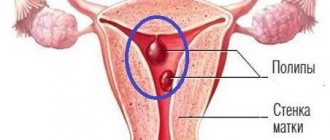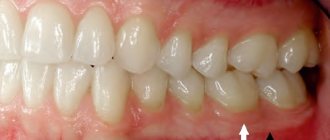Hospitalization and treatment under the compulsory medical insurance quota. More details after viewing the pictures.
Chronic subdural hematoma of the brain is a pathological condition in which there is an accumulation of blood between the arachnoid and dura mater. The main cause of the disease is traumatic brain injury (TBI). The disease accounts for about 40% of all intracranial hemorrhages. Hematoma can appear at any age. Experts distinguish subdural traumatic and non-traumatic hemorrhage.
Symptoms
With chronic subdural hematoma, cerebral and focal symptoms occur. Most often, patients complain of impaired consciousness and headaches, which may be accompanied by vomiting. These manifestations are in one way or another connected with a previous head injury. Memory disorders may occur in which a person does not remember some events from a past life. In most cases, generalized epileptic seizures recur.
Patients complain not only of a headache, but also of a painful sensation in the area of the eyeballs. Discomfort increases when moving the eyes. The pain may radiate to the back of the head. There is also increased sensitivity to light. Decreased vision, the appearance of mydriasis of the opposite pupil, and a sharp reaction to light sources are possible. Oculomotor disturbances are also possible.
2. Mechanism of occurrence of subdural hematomas
Such hematomas, as a rule, occur due to a sharp inertial displacement of the brain that occurs during a strong blow to the head
. This can happen during a traffic accident, a fall from a height, an awkward fall on your back followed by hitting your head on the asphalt, for example, during icy conditions, etc. In this case, a rupture of the bridge veins flowing into the superior sagittal sinus occurs.
A similar injury can also occur in the absence of a direct impact with the head on a hard surface - sometimes a fall or an unsuccessful jump from a height to one’s feet, a sudden movement of the head during sudden braking of a vehicle, etc. is sufficient.
A subdural hematoma can also occur on the side of the head opposite to the blow in the event of an impact with an object that has a large surface area - an ice block, a log, a car side, etc.
Visit our Neurosurgery page
Diagnosis and clinical manifestations
If you suspect the appearance of a chronic subdural hematoma, you should contact a neurosurgeon or neurologist. The examination includes a thorough examination, which involves assessing the nature of the injuries received and performing an X-ray of the skull. An additional diagnostic method is ophthalmoscopy.
Experts detect atrophic processes in the stagnant discs of the visual nerve structures in the fundus. But the main examination methods are computed tomography and magnetic resonance imaging of the brain. The first research method is the most preferable and informative.
Treatment methods in adults
Treatment of chronic subdural hematoma of the brain is selected according to the patient’s condition. Conservative therapy is used strictly according to indications, when the hematoma does not exceed more than 1 cm and there are certain restrictions for surgical intervention.
It is possible to prescribe medications that prevent swelling of brain tissue, and use symptomatic drugs, including antiemetics and anticonvulsants. In most cases, patients show signs of brain compression and intracranial hypertension. this is a direct indication for surgical treatment. It is possible to remove the hematoma using endoscopic equipment through a burr hole.
When using the endoscopic method, the neurosurgeon inserts an endoscope into the dura mater through a small incision in the scalp and washes out the contents of the existing hematoma.
After the surgical intervention is completed, specialists drain the hematoma cavity and wash it with antibacterial agents to minimize the risk of infectious complications.
CT scan
On CT, CSH is a zone of altered density between the bones of the skull and the substance of the brain, usually crescent-shaped with a multilobar distribution and predominantly parasagittal-convexital localization; in this case, the outer border repeats the outlines of the inner surface of the skull bones, and the inner border repeats the outlines of the cerebral hemisphere (Fig. 3, 4). Semiotics. Based on density, we divided CSG into hypodense (28 or less H units), isodense (29–45 H units), hyperdense (more than 45 H units), and heterodense (Fig. 5). Hypodense CSH are the most common. The decrease in the density of the hematoma contents ranges from pronounced to insignificant (17–28 H units), but always exceeds the density of the cerebrospinal fluid. More often, the hypodensity zone is homogeneous, but sometimes areas of decreased density of different intensity are detected. Against this background, linear increases in density can be detected due to visualization of the outer or inner layer of the capsule or septa in multi-chamber CHS. A comparison of CT data with surgical findings shows that in the majority of patients with hypodense CSH, the hematoma cavity contains xanthochromic or brownish-greenish turbid fluid, in some - altered thin blood, as well as small blood clots. With hypodense CSH, the duration of the history varies widely - from 25 days to 5 years, sometimes from 14 days. The phenomenon of a decrease in the density of CSH content is mainly associated with the degradation of fibrin in blood clots. Isodense CSH is less common. The density of the hematoma contents is practically no different from the brain substance. At the same time, CT usually shows signs of a space-occupying process and, which is typical for CSH, there are no convexital subarachnoid spaces on the affected side. A comparison of CT data with surgical findings shows that in half of the patients with isodense CSH, the hematoma cavity contains a brownish-greenish fluid, in others there is liquefied blood and its clots. Isodense CSH was observed with a medical history ranging from 18 days to 1 year. The iso-density phenomenon can appear earlier: sometimes 10–14 days after a traumatic brain injury. It is determined mainly by the ratio of liquefied blood and its derivatives in the CSG cavity. Hyperdense CSH is rare. The increase in the density of the contents of hematomas varies from mild to significant.
With hyperdense CSH, in most cases, the hematoma cavity contains, along with liquefied blood, its clots. Note that the more blood clots predominate in the hematoma, the higher its density. The phenomenon of increased density is associated with repeated hemorrhages into the hematoma cavity, which can be observed any time after the formation of CSH. Heterodense CSH is common. They are presented on CT as mosaic patterns: in the hematoma cavity, areas of increased and decreased density are combined in various proportions, less often decreased density and density equal to that of the brain substance, and in some cases all three variants of changes in the density of CSH are observed. Heterogeneous CSH is characterized by the phenomenon of sedimentation in the form of a clear delineation of the contents of the hematoma into a low-density upper part and a high-density lower part (with the patient positioned on his back). When comparing CT data with surgical findings, it was established that in 2/3 of patients the hematoma cavity contains blood clots mixed with a greenish-brownish liquid, in the rest - dark liquid blood and small fibrin clots. The duration of the medical history for heterodense CSH ranges from 16 days to 5 years. Heterogeneous density is associated both with repeated macro- and microbleeds into the hematoma cavity, and with the degradation of previously shed blood. The sedimentation of high-density, not yet decayed blood cells causes the appearance of the CT phenomenon of sedimentation. In the structure of CSH on CT, compacted layers of the capsule, cords, interchamber septa and some other formations can also be traced. The CSH capsule is detected on CT scan in approximately 10th of the cases, although during operations the outer and inner membrane (expressed to varying degrees) are almost always found. This dissociation can be explained by the low contrast of the capsule, often its thinness, adherence to the bones of the skull and the substance of the brain, repeating their outlines. It is also possible that in some cases the failure to detect an existing CSH capsule on CT is due to the fact that contrast enhancement is not always used. The use of three-dimensional reconstruction of CSH using spiral CT has expanded the anatomical and topographical understanding of encysted hemorrhages, showing their relationship with both the brain structures and the vessels of the hemispheres (the phenomenon of the avascular zone); see fig. 4. Modern capabilities of perfusion techniques (CT perfusion) make it possible to assess the state of volumetric cerebral blood flow in CSH and its dynamics in the postoperative period. Let's imagine the computed tomographic syndrome of CSH that we have identified. It is most often characterized by: – a zone of altered density (hypodense, hyperdense, heterodense) between the bones of the skull and the substance of the brain, often crescent-shaped and usually having a multilobar or mantle distribution (unilateral or bilateral) with a predominantly parasagittal-convexital localization; – repetition of the outlines of the inner surface of the skull bones as the outer boundary of the pathological zone of altered density and the outlines of the surface of the cerebral hemisphere as its inner boundary; – a significant predominance of the area of the pathological zone over its thickness; – the absence of subarachnoid fissures on the side where the hematoma is located with a simultaneous dislocation effect on the homolateral lateral ventricle. With CSH of rare atypical localization (basal, interhemispheric, posterior cranial, etc.), CT syndromes, along with common features, have many significant differences from the identified CT syndrome of the most common typical hemispheric localization of CSH. In case of bilateral CSH, important additional computed tomographic signs are the absence of images of convexital subarachnoid fissures on both sides and the phenomenon of convergence of the anterior and posterior horns of the lateral ventricles, as well as changes in their waist. CT syndrome of CSH can be supplemented by other direct signs: the phenomenon of sedimentation, visualization of the outer or inner layers of the capsule, multi-chamber structure or intrahematomal trabeculae (their detection can often be facilitated by contrast enhancement).
Life forecast
The prognosis of life with chronic subdural hematoma depends on the timeliness of seeking medical help. Severe consequences are observed mainly in elderly patients. Lethal cases occur not only due to the presence of the hematoma itself, but also against the background of traumatic effects on brain tissue. Edema, cerebral ischemic processes, and dislocation of brain structures may occur.
After surgical treatment, it is necessary to establish strict monitoring of the patient's condition. In the first hours after surgery, cerebral edema may occur.
Surgery for chronic hematoma is one of the most effective treatment methods. Conservative therapy is used as an additional way to help the patient. The Medsi Clinic successfully performs neurosurgical operations for such conditions.










